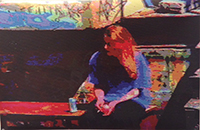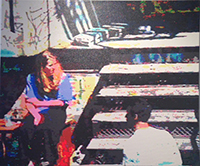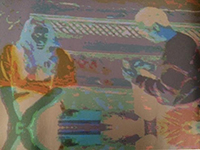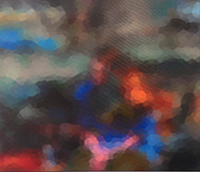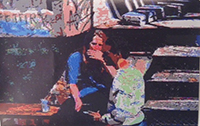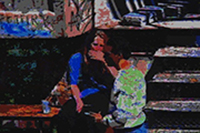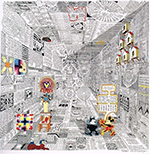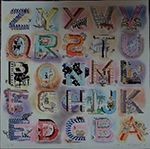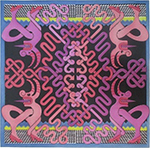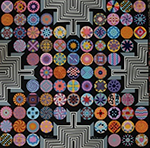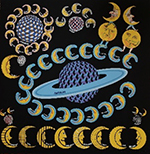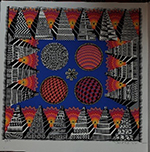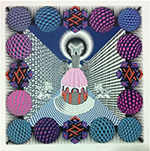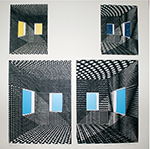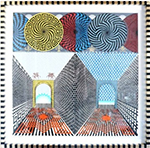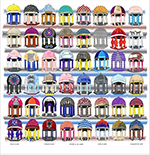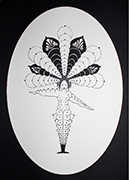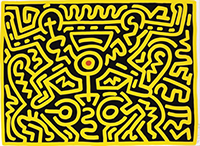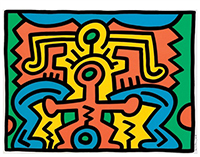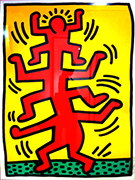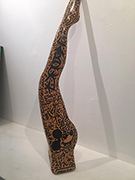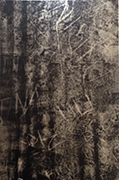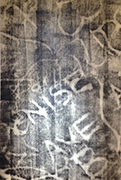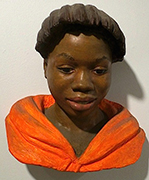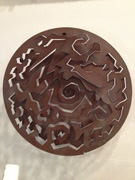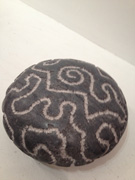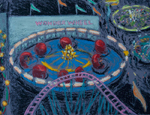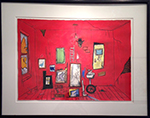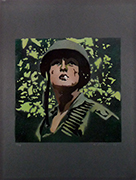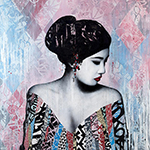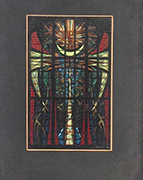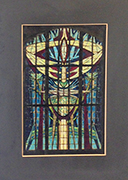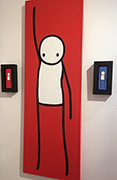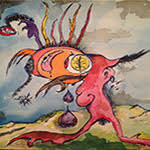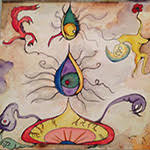Dorian Grey Gallery | Tel: 516 244 4126
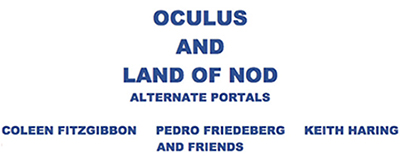
Opening Reception and Land of Nod Film Screening
Wed., April 6, 2016 6- 9PM
RSVP: doriangreygallery@gmail.com
COLEEN FITZGIBBON
Coleen Fitzgibbon is an experimental film artist based in NYC and has screened work at international film festivals, museums and galleries, including New Museum, Ft Worth Modern Museum, Salon94, Louis B. James Gallery, MOCA/LA Film Forum, Austrian VIENNALE, TIFF, International Film Festival Rotterdam, BERLINALE, MOMA (NYC), Palais des Beaux Arts (Brussels), Institute of Contemporary Art (London), DeAppel (Amsterdam), Subliminal Projects Gallery (Los Angeles), Anthology Film Archives, Light Industry, Exit Art (NYC) and John Weber Gallery.
Fitzgibbon graduated from the School of the Art Institute of Chicago and the Whitney Independent Study Program. Fitzgibbon studied with Landow, Brakhage, Rainer and Schneemann; she also worked on projects with artistis Jack Smith, Dennis Oppenheim, Gordon Matta-Clark and Les Levine. She was a co-founder of X+Y with Robin Winters in 1976, The Offices of Fend, Fitzgibbon, Holzer, Nadin, Prince and Winters in 1979 and the artist group Collaborative Projects, Inc. (Colab) in 1977 through 1981.
Land of Nod (2013): Digital, color & b/w, sound, 18 minutes. People waiting on a street for something to come their way ask "are you anywhere?" Land of Nod is an experimental doc which captures a day in the life of black marketeers; shown at the Viennale Film Festival in 2014.
PEDRO FRIEDEBERG
Pedro Friedeberg has painted, created murals for institutions in Mexico and abroad, illustrated books and book covers, created furniture and set designs. He was the art director, along with Sergio Villegas of a spectacular called Arbol de la Vida. He began designing furniture in the 1960s, rejecting the then-dominant international style of architecture. He has designed chairs, tables, couches and love seats in fantastic designs. He is well known for his hand-chair, which has sold more than 5,000 copies since it was created in 1962. He has declared that he is never really relaxed and stated that he has painted one canvas per week, 52 weeks a year for the fifty years of his career in addition to sculptures and chair designs.
His first two individual exhibitions were at the Diana Gallery in 1959 and the Protec Gallery in 1960, both in Mexico City. In the 1960s, he had sixteen exhibitions in Mexico, France, New York, Portugal and the Pan American Union in Washington, DC in 1963. In the 1970s, he had nineteen exhibitions in various cities in Mexico and the United States, Barcelona, Israel and Canada. In the 1980s, he had thirteen including the Museo de Arte Moderno in Mexico City. In the 1990s, he had twenty one, mostly in Mexico and an exhibition in Colombia. In the 2000s, he had nine, all in Mexico except for one in Germany in 2000 and one in Belgium in 2003. He has also participated in many group exhibitions from 1960 to 2003.
Awards include the Cordoba Argentina Biennale in 1966 (2nd prize), the Solar Exhibition in Mexico City in 1967 (1st prize), the Argentina Engraving Triennale in Buenos Aires in 1979, the XI Biennale of Graphic Works in Tokyo (Special Award) in 1984 and was named an "Artistic Creater" by the National System of Mexican and Foreign Creators in 1993. His work and life have been featured in many books from 1972 to the present. These books include his autobiography published in Mexico "De vacaciones por la vida, Memorias no autorizadas" (On vacation for life, Unauthorized memories). In his autobiography, Friedeberg writes about experiences with his many friends in the art world, including Salvador Dali, Leonora Carrington, Kati Horna, Tamara de Lempicka, Mathias Goeritz, Edward James, Zachary Selig and Bridget Bate Tichenor.
His works can be found in the permanent collections of the Museo de Arte Moderno, the Jose Luis Cuevas Museum, the Televisa Cultural Center, all in Mexico City, the Museum of Contemporary Art in Toluca, the Museum of Contemporary Art in Culiacan, the Museum of Contemporary Art in Patzcuaro, the Museum of Modern Art in New York, the Museum of Contemporary Art in Chicago, the Museum of Contemporary Art in New Orleans, the Library of Congress in Washington DC, the Rose Art Museum of Brandeis University in Boston, the National Research Library in Ottawa, the Musee du Louvre in Paris, the Israel Museum in Jerusalem, the National Museum of Modern Art in Baghdad, the Ponce Museum of Art in Puerto Rico, the Franklin Rawson Museum in Argentina, the Omar Rayo Museum in Colombia and the Smithsonian Institution in Washington, DC., The Museum of Arts and Design in New York.
KEITH HARING:
Between 1980 and 1989, Haring achieved international recognition and participated in numerous group and solo exhibitions. His first solo exhibition in New York was held at the Westbeth Painters Space in 1981. In 1982, he made his Soho gallery debut with an immensely popular and highly acclaimed one-man exhibition at the Tony Shafrazi Gallery. During this period, he also participated in renowned international survey exhibitions such as Documenta 7 in Kassel; the Sao Paulo Biennial; and the Whitney Biennial. Haring completed numerous public projects in the first half of the 80's as well, ranging from an animation for the Spectacolor billboard in Times Square, designing sets and backdrops for theaters and clubs, developing watch designs for Swatch and an advertising campaign for Absolut vodka; and creating murals worldwide.
During a brief but intense career that spanned the 1980s, Haring's work was featured in over 100 solo and group exhibitions. In 1986 alone, he was the subject of more than 40 newspaper and magazine articles. He was highly sought after to participate in collaborative projects, and worked with artists and performers as diverse as Madonna, Grace Jones, Bill T. Jones, William Burroughs, Timothy Leary, Jenny Holzer, Yoko Ono and Andy Warhol. By expressing universal concepts of birth, death, love, sex and war, using a primacy of line and directness of message, Haring was able to attract a wide audience and assure the accessibility and staying power of his imagery, which has become a universally recognized visual language of the 20th century.
Since his death, Haring has been the subject of several international retrospectives. The work of Keith Haring can be seen today in the exhibitions and collections of major museums around the world.
Gallery Contact:
Christopher Pusey 516 244 4126

